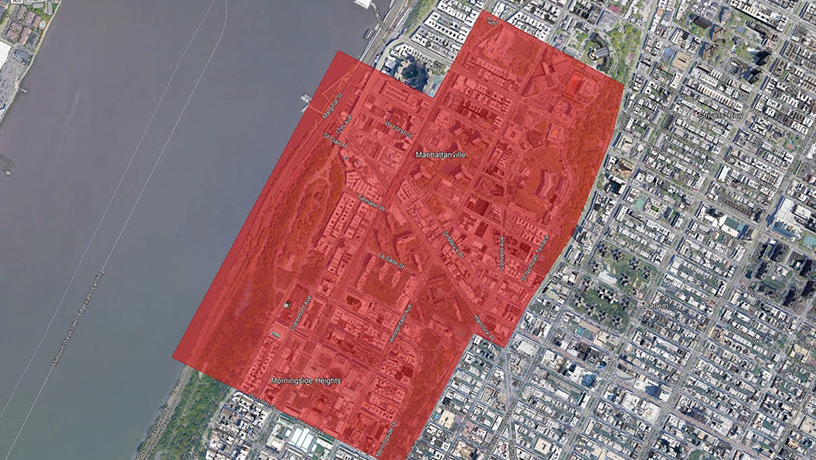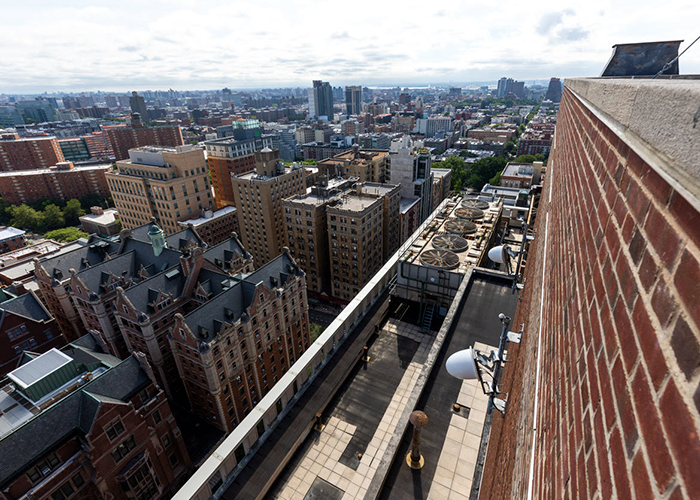
The beyond-5G testbed will now include the Columbia Morningside and Manhattanville campuses and much of West Harlem
COSMOS, the only beyond-5G testbed located in New York City, is home to one of the first Innovation Zones the Federal Communications Commission (FCC) created roughly two years ago to enable exploration of advanced wireless technologies. Now the FCC has expanded the New York City Innovation Zone to help push the limits of wireless networking.
“The expansion will allow both industry and academia to conduct larger-scale experimentation in a unique, realistic dense urban environment,” said Gil Zussman, an electrical engineering professor and Data Science Institute (DSI) member who heads the Columbia COSMOS team.
By 2023, the number of internet-connected devices is expected to grow to 43 billion, an almost threefold increase from 2018, according to the consulting firm McKinsey & Company. This creates an urgent need in the United States and abroad for infrastructure that can rapidly handle all that data.
To pave the way for the next wireless revolution, in 2018, the National Science Foundation (NSF) and an industry consortium announced they would invest $100 million over seven years to build a set of wireless testbeds for U.S. researchers to test new ways of boosting internet data rates, with the aim of supporting data-intensive applications in robotics, immersive virtual reality, and traffic safety. COSMOS was one of the first two testbeds to receive funding under the NSF Platforms for Advanced Wireless Research (PAWR) initiative.
COSMOS is led by researchers at Rutgers, Columbia and NYU, and in partnership with New York City, Silicon Harlem, City College of New York, IBM, and University of Arizona. It was designed as a proving ground for a new generation of wireless technologies and applications in densely populated real-world environments, with a technical focus on ultra-high-bandwidth and low-latency wireless communications with tightly coupled edge computing.
The expansion will allow both industry and academia to conduct larger-scale experimentation in a unique, realistic dense urban environment.
GIL ZUSSMAN
LEAD, COLUMBIA COSMOS TEAM
In 2019, the FCC selected the New York and Salt Lake City sites as the nation’s first two Innovation Zones. These areas provide opportunities for qualified licensees to test new advanced technologies and prototype networks outside a traditional small campus or laboratory setting.
Innovation Zones “are city-scale testbeds that make it possible for anyone with a program license to show up and conduct experiments. They make opportunities for innovation accessible to both large entities and small players,” said FCC acting chair Jessica Rosenworcel. “Plus, they make it possible to develop products in real-world environments at a scale no laboratory could provide.”
On August 5, the FCC announced it was significantly expanding the geographical boundaries of the New York City Innovation Zone. The FCC also allowed higher power transmission in COSMOS in millimeter-wave (mmWave) frequencies. Two additional zones were announced for Raleigh, NC and Boston, MA.
“We thank the FCC, NSF and the PAWR Program Office for this significant expansion that we believe will help turn West Harlem into an innovation hub for beyond-5G and 6G technologies,” Zussman said.
The New York City Innovation Zone previously covered 11 city blocks in West Harlem, bounded by W. 134th Street on the north, W. 123rd Street on the south, Amsterdam Avenue on the east and Broadway on the west. Now it will cover an approximately 1sq mile area, including the Columbia University Morningside and Manhattanville campuses, the City College of New York campus, Riverside, Morningside, and St Nicholas Parks, and a large part of West Harlem.

One wireless frontier that researchers are exploring using COSMOS are mmWave frequencies, ranging from 20 GHz to 100 GHz. These will make it possible to extract more capacity from the radio spectrum, but one drawback is that mmWave signals don’t travel as far. To overcome this, researchers are using COSMOS to test new radio and antenna designs and techniques for aiming radio waves directly at mobile devices.
“In collaboration with Nokia Bell Labs and the local community, we are now planning mmWave measurements in a school in Hamilton Heights, which will allow us to evaluate connectivity solutions that will help deal with the digital divide,” Zussman said.
Another area of research in COSMOS involves upgrading traditionally closed Radio Access Networks so they are more open, intelligent, software-powered and fully interoperable, which in turn promises to make wireless networks faster and more agile. As part of these Open Radio Access Network (O-RAN) efforts, part of the third global O-RAN plugfest to test open network equipment will soon take place in COSMOS, Zussman said.
“This [announcement] is a big deal. History tells us when you give innovators in the United States sandboxes to test new ideas, good things follow,” said Rosenworcel. “Here’s hoping that creating these Innovation Zones will unlock new breakthroughs in advanced wireless technology and Open RAN. I know I’m excited to see what comes next.”
In addition to Zussman, the COSMOS research team is led by Prof. Dipankar Raychaudhuri and Ivan Seskar at Rutgers, and Prof. Sundeep Rangan at New York University’s Tandon School of Engineering.
